Vegan butternut squash mac and cheese with tofu and spianch! This flavourful and wholesome recipe is ready in less than 30 minutes and is perfect for a healthy weeknight dinner. Nut-free, oil-free and easy to make gluten-free, as long as you use gluten-free pasta.
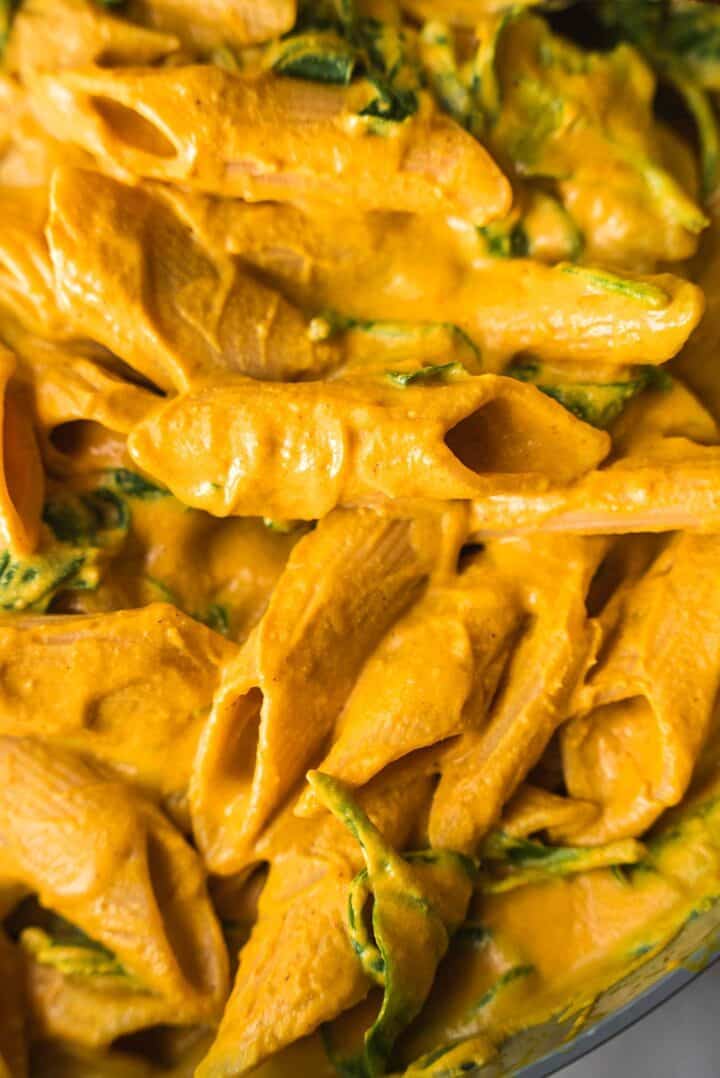
You know those recipes that the internet just can’t get enough of? Well, vegan mac n cheese is definitely one of them, probably because the concept in itself is so fascinating. It seems like the least vegan dish possible, but it’s actually so easy to recreate without even using vegan cheese alternatives.
I love making vegan cheeses out of vegetables. If you've never tried it before, I won't blame you at all for being skeptical. But, it's always fun to try new things, especially when they're as delicious as this! It's one of my go-to comfort food dinners, and it might become yours, too.
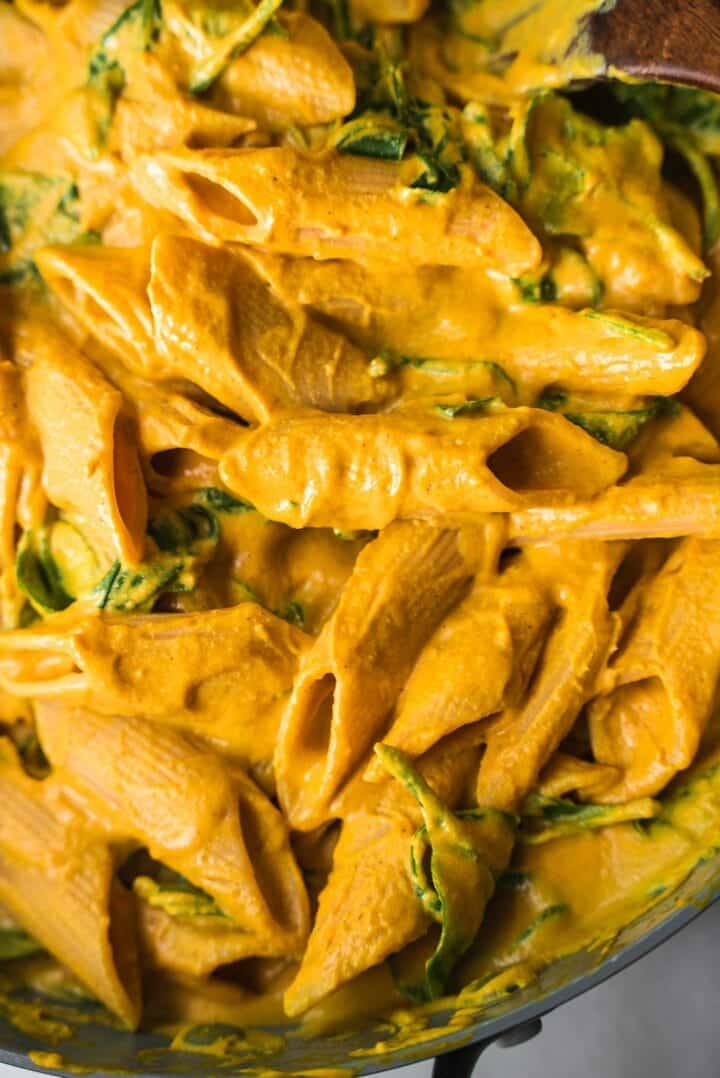
Vegan butternut squash mac and cheese
This recipe gets that tricky balance between wholesomeness and taste just right. It isn’t your traditional mac and cheese recipe and tastes more ‘healthy’, but I wanted to use simple ingredients, with no odd substitutes that are difficult to find. And as a lot of recipes use cashews, this butternut squash mac and cheese recipe is nut-free and therefore more allergy-friendly.
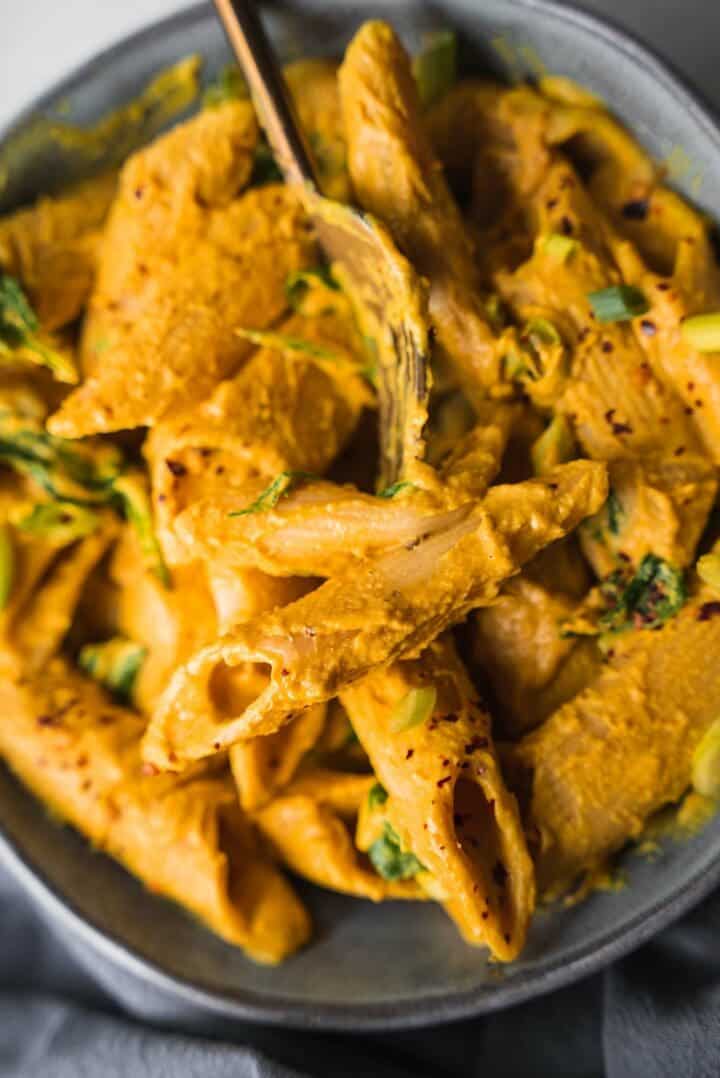
If you or some of your family members don’t like vegetables, I would definitely recommend this recipe because the ‘cheese’ sauce is made out of butternut squash and onions, aka a great way to eat more vegetables even if you're not a fan of salad.
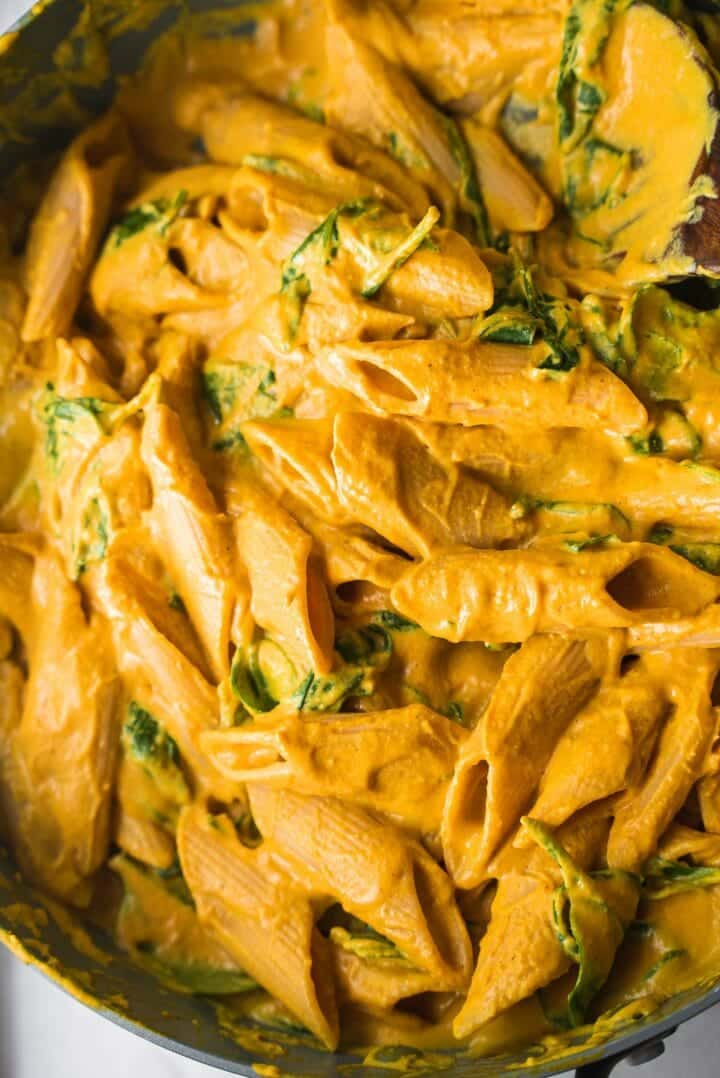
I also added tofu for some plantbased protein. Once again, if tofu isn’t your favourite food, this is a great way to add it to your diet. Given the fact that it's blended into the sauce, you won't be able to taste it at all! But, the addition of tofu gives the sauce a distinctive silkiness that's otherwise hard to achieve without cashews/vegan cheese substitutes.

Why you'll love this butternut squash mac n cheese
It's...
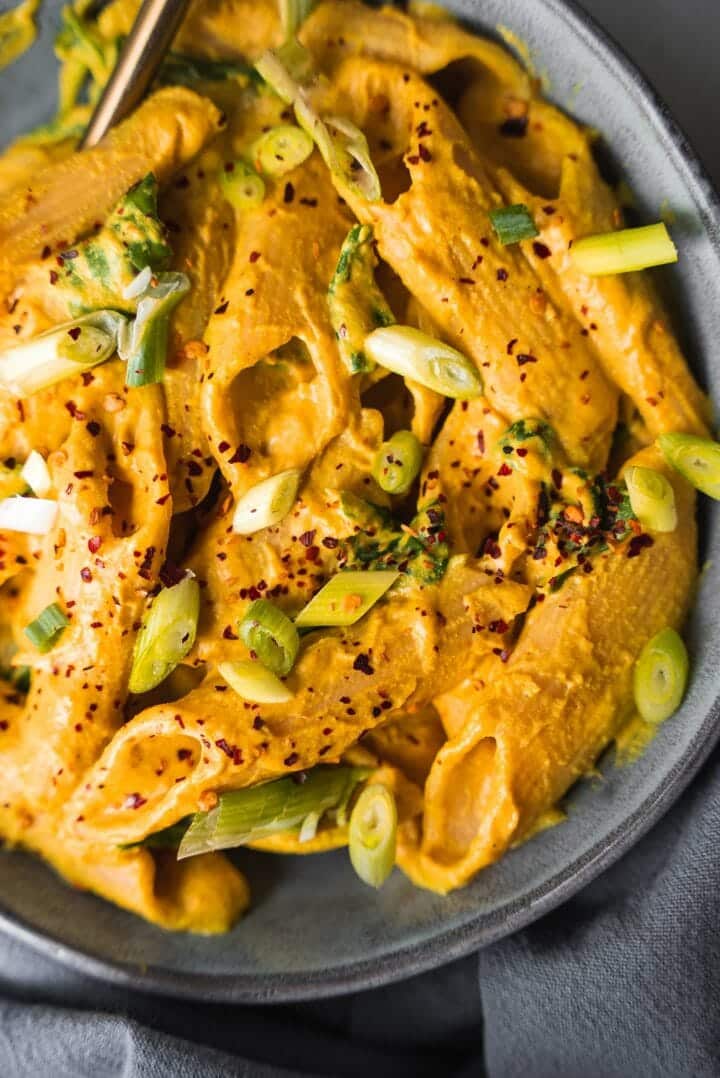
- Super flavourful. This definitely isn't a boring meal! The flavours are rich and deep, with hints of umami.
- Comforting and cosy. I always end up going back for seconds.
- Perfect for a weeknight dinner. Or any meal, to be honest. How about leftovers for breakfast?!
- Gluten-free, as long as you use gluten-free pasta.
- Oil-free.
- Made with lots of vegetables. The vegetables are also hidden, making this great for picky eaters.
- Easy to make, even as a complete beginner in the kitchen.
- Ready in under 25 minutes.
Ingredients and substitutes
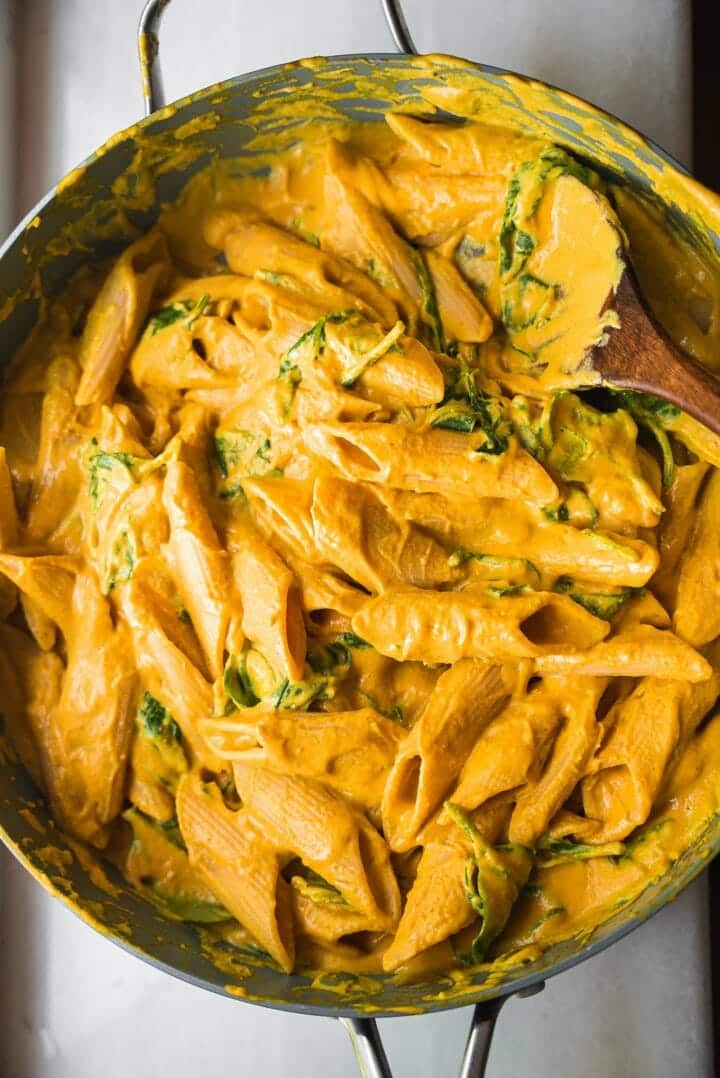
- Gluten-free pasta of choice. Any pasta shape works for this recipe!
- Butternut squash. You can also use any other squash/pumpkin variety, or sweet potato.
- Nutritional yeast. This is great for adding a cheesy flavor. You can also add grated vegan cheese.
- Extra firm tofu. You can also use silken tofu.
- Garlic. You can use either whole garlic cloves, or around 1 tsp garlic powder.
- Spices: curry powder, cumin and paprika.
- Cornstarch. This will be used to thicken the sauce. You can also use tapioca flour or all-purpose flour/a gluten-free flour blend.
- Spinach. You can use any other leafy green of your choice, such as your favorite kale variety.
- Plant based milk of your choice. Use coconut milk from a can for extra creaminess.
How to make vegan butternut squash mac and cheese
Start by cooking your pasta according to instructions on packaging. This usually takes 10-15 minutes. At the same time, cook the butternut squash and red onion, until softened, for around 15 minutes. When draining and rinsing the vegetables, retain ½ cup of the cooking water.
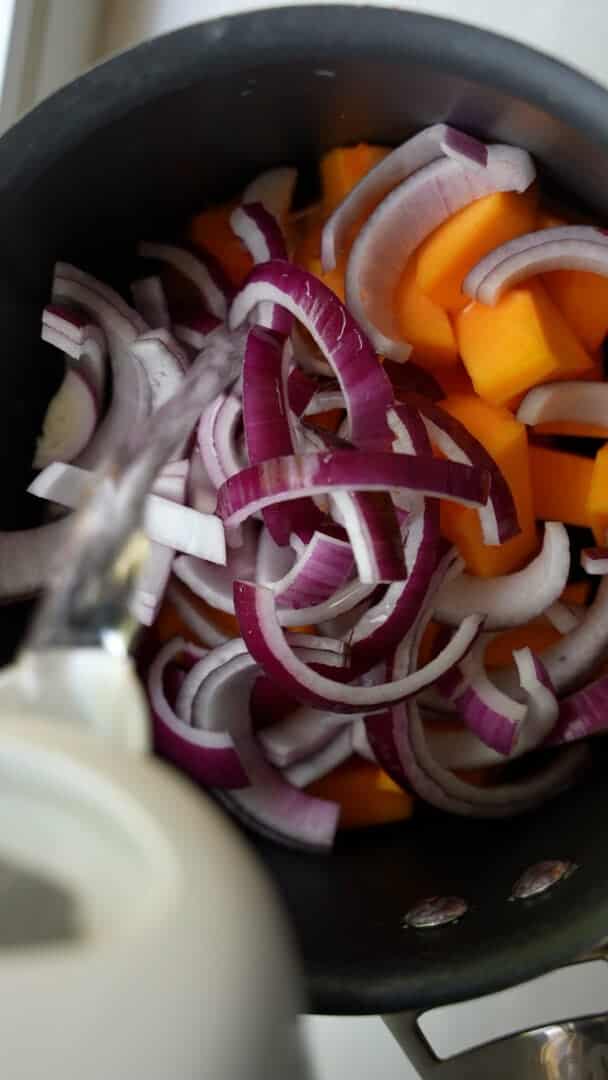

Transfer the cooked vegetables to a blender or food processor together with the cooking water, nutritional yeast, tofu, garlic, curry powder, cumin, paprika and cornstarch. Blend on a high speed, until very smooth.
Add the cooked and drained pasta to a frying pan or saucepan over a medium heat. Add the sauce, salt, spinach and plant based milk. Stir until the spinach wilts and the sauce thickens.
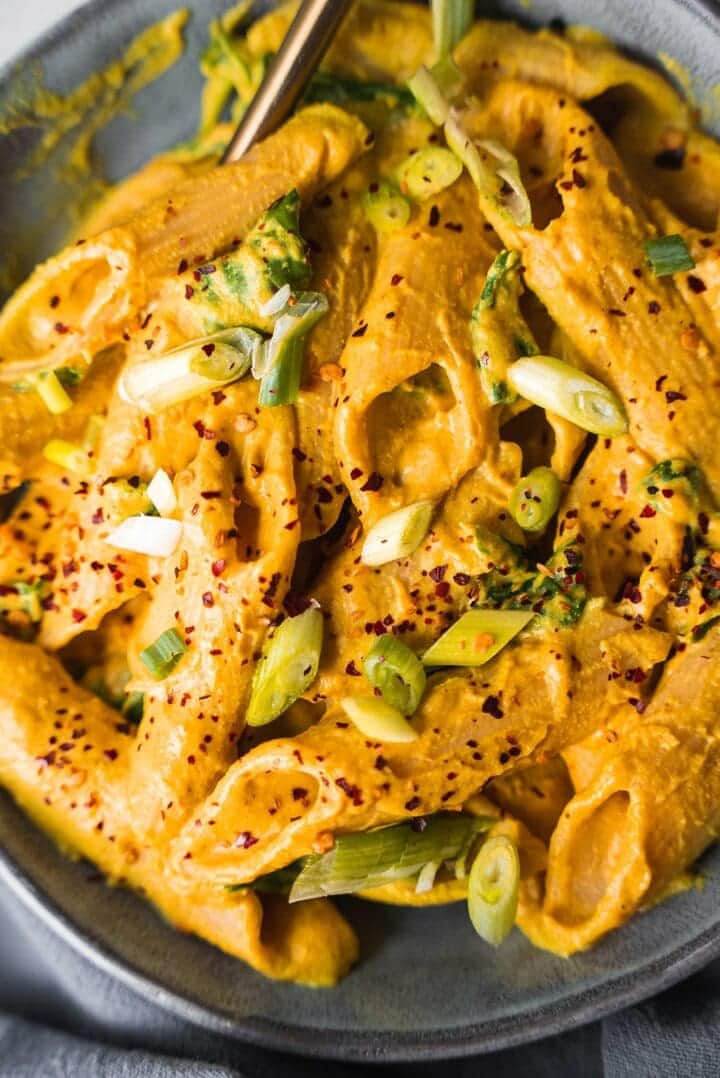
Storing and freezing vegan mac and cheese
You can keep this meal in the fridge for 2-3 days, reheating as needed on the stove. It may be necessary to add extra plant based milk.
I would not recommend freezing the mac and cheese together with the pasta, as the pasta will fall apart when reheated. However, you can freeze the sauce in an ice cube tray for up to 2 months, and reheat them on the stove when ready to use.

Other amazing vegan pasta recipes
- My chickpea pasta with mushrooms is easy to make and delicious.
- Nut-free creamy pasta with butter beans makes a great quick dinner.
- Try kidney bean one pot pasta for a simple dinner or lunch.
- You just can't go wrong with vegan spaghetti bolognese!
- For a refreshing side dish, try a creamy pasta salad.
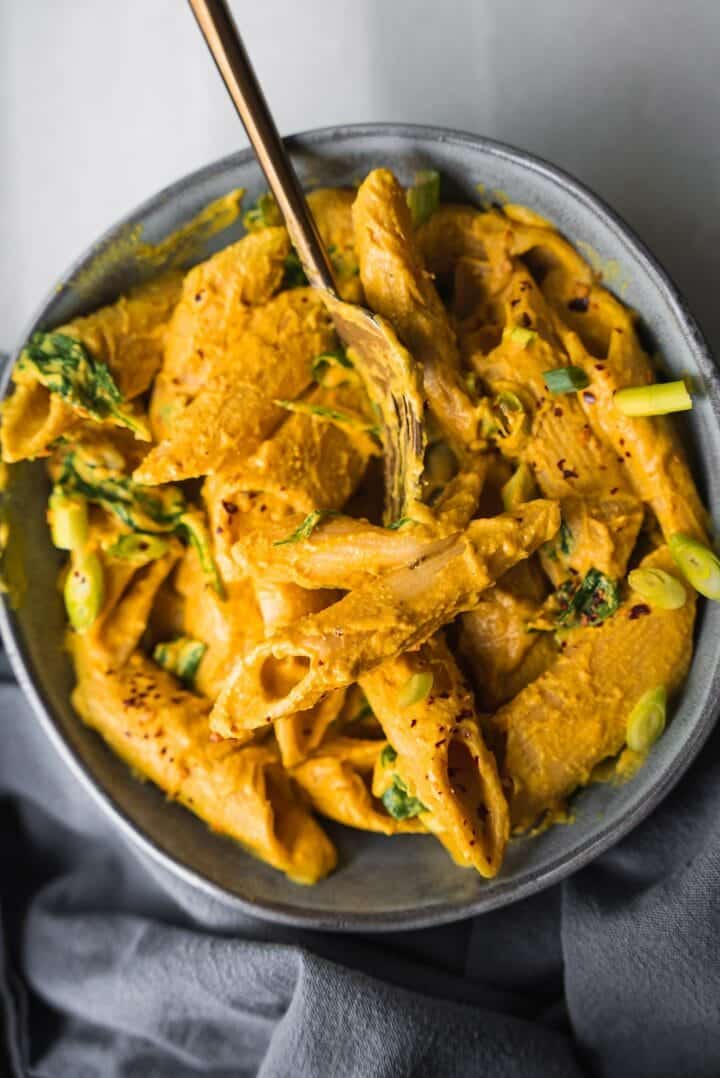
If you give this vegan butternut squash mac and cheese a go, be sure to tag me on Instagram (@ohmyveggies) so I can see your creations, and leave your feedback in the comments below together with a star rating.
Recipe
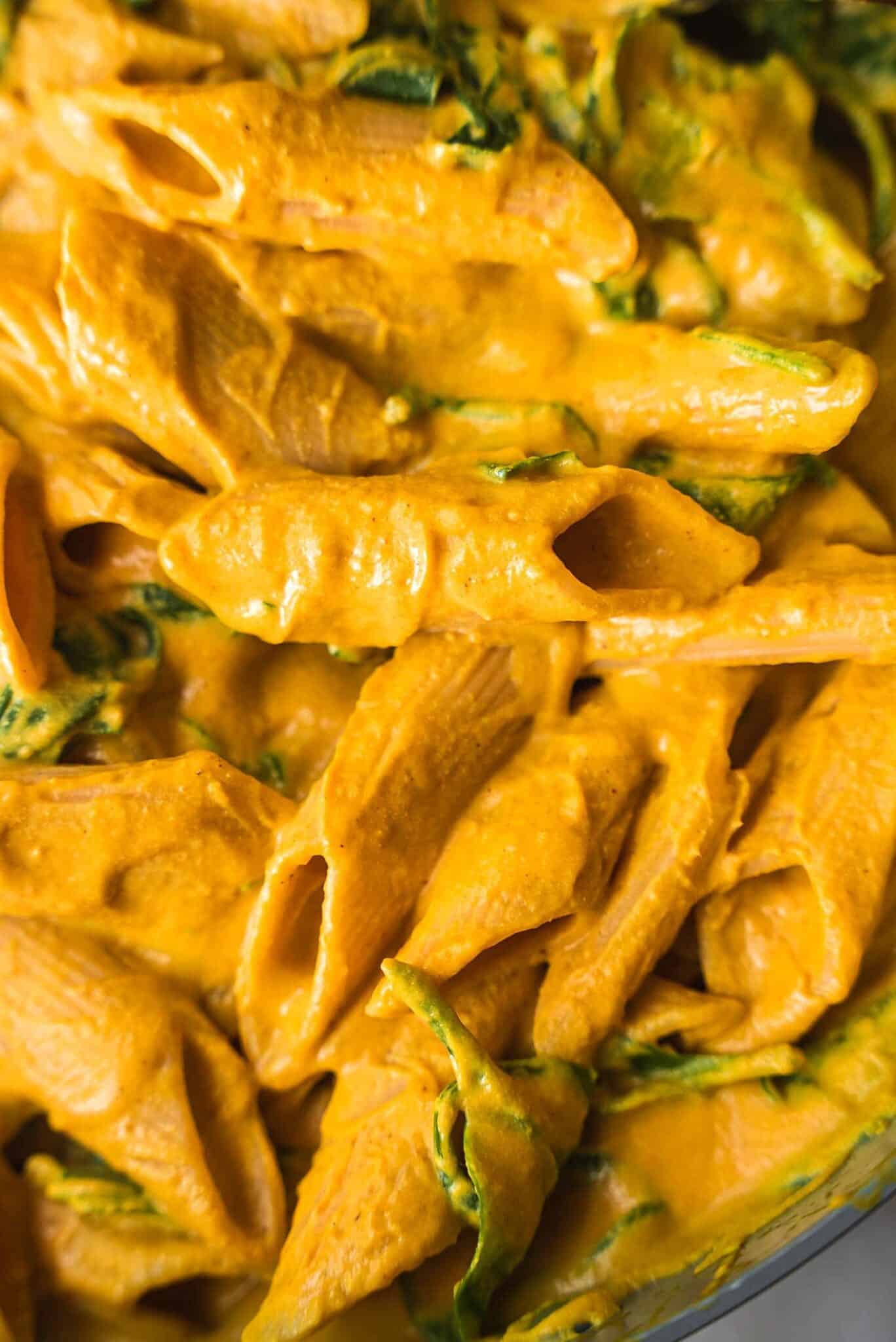
Equipment
- Saucepan x 2
Ingredients
- 10 oz gluten-free pasta
- 3 cups butternut squash peeled and cubed
- 1 large red onion diced
- ⅓ cup nutritional yeast
- 10 oz extra firm tofu
- 3 cloves garlic
- 2 tsp curry powder
- 1 tsp cumin
- 1 tsp paprika
- 2 tbsp cornstarch
- 4 cups spinach
- 1 cup plant based milk
Instructions
- Cook the pasta according to instructions on packaging. This usually takes 10-15 minutes.
- Cook the butternut squash and red onion, until softened, for around 15 minutes. When draining and rinsing the vegetables, retain ½ cup of the cooking water.
- Transfer the cooked vegetables to a blender or food processor together with the cooking water, nutritional yeast, tofu, garlic, curry powder, cumin, paprika and cornstarch. Blend on a high speed, until very smooth.
- Add the cooked and drained pasta to a frying pan or saucepan over a medium heat. Add the sauce, salt, spinach and plant based milk. Stir until the spinach wilts and the sauce thickens.
Video
Notes
- You can keep this meal in the fridge for 2-3 days, reheating as needed on the stove. It may be necessary to add extra plant based milk.
- You can freeze the sauce in an ice cube tray for up to 2 months, and reheat them on the stove when ready to use.


Comments
No Comments